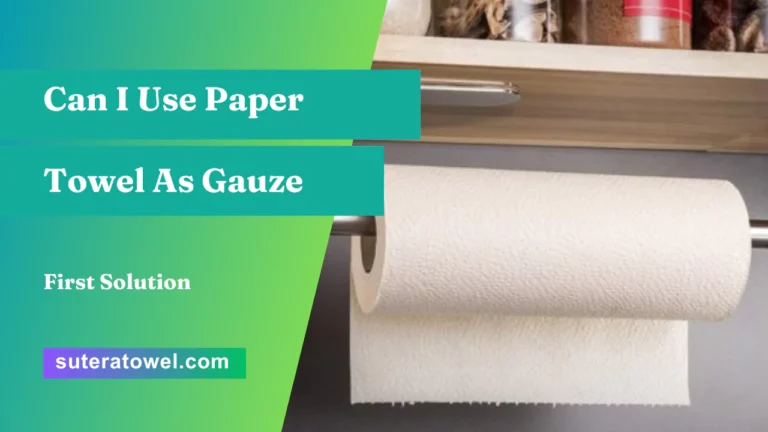No, you cannot use paper towel as gauze. Paper towel is not designed to be sterile and does not provide the same level of absorbency and protection as gauze.
Using paper towel as a substitute for gauze can increase the risk of infection and hinder the healing process. Gauze is specifically made to be sterile and absorbent, making it ideal for wound dressing and bandaging. It allows for proper airflow and enables the wound to heal more effectively.
Additionally, gauze is available in different sizes to suit various wound sizes and shapes. So, it is always best to use gauze for wound care to ensure proper healing and minimize the risk of complications.
- 1 The Differences Between Paper Towels and Gauze
- 2 Potential Risks Of Using Paper Towel As Gauze
- 3 Alternatives To Paper Towel And Gauze For Wound Care
- 4 Proper Techniques For Wound Care And Dressing
- 5 Expert Recommendations On Wound Care Products
- 6 Frequently Asked Questions On Can I Use Paper Towel As Gauze
- 7 Conclusion
The Differences Between Paper Towels and Gauze
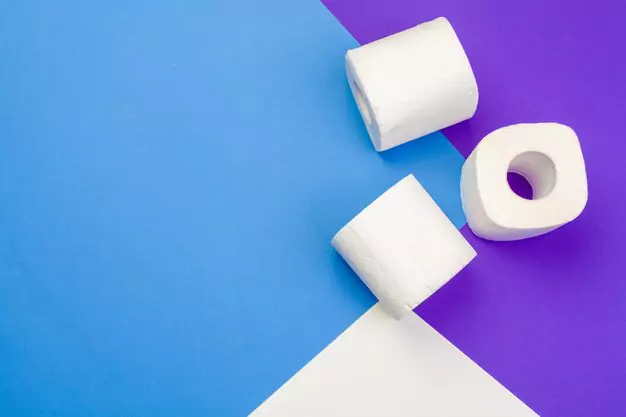
The properties of paper towels and gauzes differ significantly, making them unsuitable alternatives for each other. Paper towels lack the necessary absorbency and medical-grade standards that gauze provides for wound care. Using paper towels as gauze can lead to infections and hinder proper healing.
When it comes to first aid and wound care, it is essential to choose the right materials for effective treatment. While paper towel and gauze may seem similar at first glance, there are significant differences that can impact their suitability for medical use.
In this section, we will delve into the dissimilarities between paper towels and gauze, focusing on their absorbency and moisture retention, texture, and fibers, as well as sterility and safety.
Absorbency And Moisture Retention:
- Paper towel:
- Offers moderate absorbency due to its composition, which is designed to absorb liquid spills and moisture in general.
- The synthetic fibers in most paper towels help to enhance absorbency.
- However, paper towels may not provide optimal moisture retention for wound care purposes.
- Gauze:
- Specifically designed for medical use, gauze is highly absorbent and excels in retaining moisture in wounds.
- Its woven or non-woven fabric structure enables superior fluid absorption, making it an ideal choice for wound dressing.
- The primary purpose of gauze is to manage and control excess moisture around the wound area.
Texture And Fibers:
- Paper towel:
- Generally available in a variety of textures, ranging from smooth to textured, to cater to different cleaning needs.
- Made from wood pulp, recycled paper, or a blend of both, it can have a slightly rough feel.
- The fibers in paper towel can potentially leave lint or fragments behind, which may not be desirable for wound care.
- Gauze:
- Typically woven or non-woven, gauze offers a soft and gentle texture, ensuring minimal irritation to the wound.
- Its fibers are finer and more tightly woven, reducing the chances of leaving any residue or lint behind.
- The smooth texture of gauze promotes better adherence to medical tape or bandages, making it more secure during dressing changes.
Sterility And Safety:
- Paper towel:
- Generally not sterile, as it is mainly intended for everyday cleaning and household tasks.
- The manufacturing process may not adhere to the same stringent standards required for medical-grade products.
- Paper towel is not designed to minimize the risk of infection and may introduce contaminants to wounds.
- Gauze:
- Typically sterilized and individually packaged, ensuring a clean and safe wound dressing option.
- Designed to maintain sterility until opened and used, minimizing the risk of introducing harmful bacteria or other pathogens.
- Gauze is specifically manufactured to meet medical standards and regulations for sterility and safety.
While paper towels and gauze may seem interchangeable in certain situations, their differences in absorbency and moisture retention, texture and fibers, as well as sterility and safety, make them suitable for specific purposes. When it comes to wound care and medical treatments, gauze proves to be the superior choice, offering better absorbency, moisture retention, and a higher level of sterility and safety compared to paper towels.
Potential Risks Of Using Paper Towel As Gauze
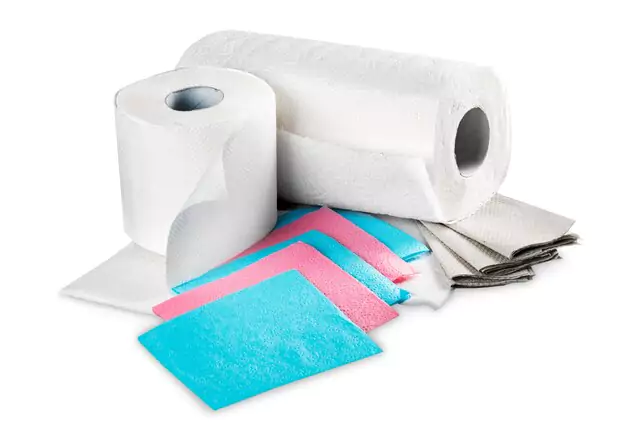
Using paper towels as gauze may pose potential risks. Paper towel lacks the same absorbency and sterilization as medical gauze, increasing the chances of infection and hindering proper wound healing. It is always best to use sterile gauze specifically designed for medical purposes.
Can I Use Paper Towel As Gauze?
Paper towel is a common household item that is readily available and often used for various tasks. However, when it comes to wound care, using paper towels as a substitute for gauze may not be the wisest choice. While it may seem convenient at the moment, there are potential risks and drawbacks to consider.
Using paper towels as gauze can lead to various issues, including:
- Irritation and allergic reactions: Paper towel is not specifically designed for wound care and may contain chemicals or dyes that can cause irritation or allergic reactions when in contact with an open wound. This can further exacerbate the discomfort and increase the risk of complications.
- Infection and contamination: The paper towel is more porous compared to sterile gauze, making it more susceptible to harboring bacteria, dirt, and other contaminants. This can significantly increase the risk of infection, hindering the healing process and potentially leading to more serious health concerns.
- Delayed wound healing: Paper towel does not have the same absorbency and wound-cleaning properties as gauze. This can result in inadequate wound cleansing and moisture management, which are crucial for proper healing. Delayed wound healing can lead to increased pain, scarring, and the potential for secondary infections.
It is important to prioritize proper wound care to optimize healing and minimize the risk of complications. While using paper towels as a temporary solution in emergencies may be understandable, it is always advised to consult a healthcare professional for appropriate wound care advice and supplies.
Remember, your health and well-being should always be a top priority.
Alternatives To Paper Towel And Gauze For Wound Care
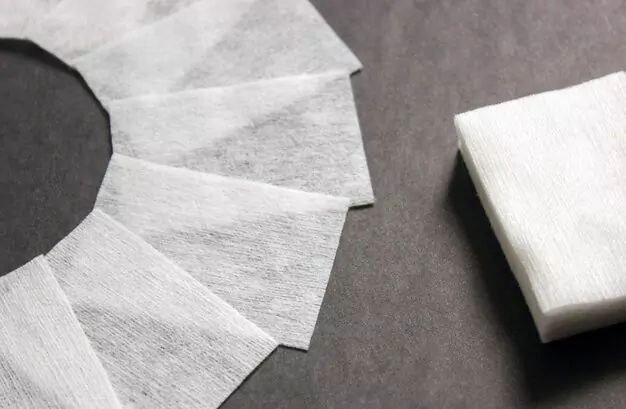
Paper towel is not recommended as a substitute for gauze when it comes to wound care. Gauze has specific properties that promote healing, while paper towels may introduce more bacteria and hinder the healing process. It is best to use appropriate medical supplies for wound care.
If you find yourself in a situation where you don’t have access to a paper towel or gauze for wound care, there are alternative options that can effectively help in dressing and healing wounds. Let’s explore some of these alternatives:
Medical Gauze And Bandages:
- Sterile medical gauze: This is a commonly used option in wound care. Its porous nature allows for breathability while absorbing excess moisture.
- Adhesive bandages: These are convenient and easy-to-use alternatives that can cover smaller wounds and help protect them from further harm.
Non-Stick Wound Dressings:
- Telfa pads: These non-adhesive dressings are designed to prevent sticking to the wound, making them a suitable option for delicate skin.
- Silicone dressings: Known for their non-stick properties, silicone dressings create an optimal healing environment by protecting the wound from bacteria and ensuring minimal trauma during the dressing change.
Hydrogel Dressings And Foam Dressings:
- Hydrogel dressings: These dressings provide a moist environment for wound healing while simultaneously cooling and soothing the affected area.
- Foam dressings: Ideal for wounds that require absorption of excess moisture, foam dressings offer excellent protection and can help maintain a balanced moisture level.
While paper towel and gauze are commonly used for wound care, it’s good to know that there are alternative options available. Medical gauze and bandages, non-stick wound dressings like Telfa pads and silicone dressings, as well as hydrogel and foam dressings, can all serve as effective substitutes.
Always consult with a healthcare professional for guidance on the best option for your specific wound care needs.
Proper Techniques For Wound Care And Dressing
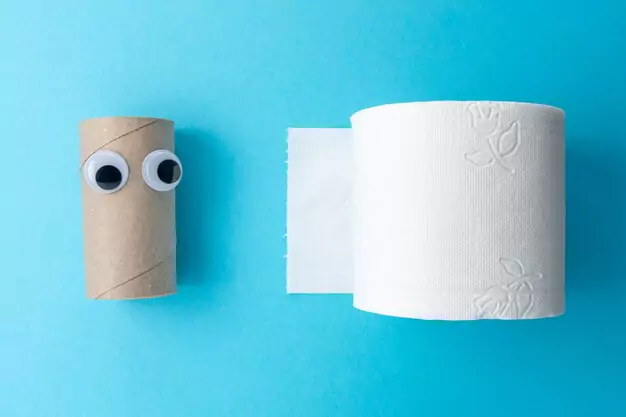
Proper wound care and dressing require specific techniques, and it is not recommended to use paper towels as a substitute for gauze. It is essential to use sterile gauze to prevent infection and promote healing.
Keeping a wound clean and properly dressed is crucial for effective healing and to prevent infections. Whether you’re unable to find gauze or simply looking for an alternative, paper towels can be used in a pinch. However, it’s important to follow proper techniques for wound care and dressing to ensure the best possible outcome.
In this section, we’ll discuss the steps involved in cleaning the wound, applying antibacterial ointment, and securing the dressing.
Cleaning The Wound:
- Gently wash your hands with soap and water before touching the wound.
- Use clean water to flush the wound and remove any dirt or debris. Avoid using strong pressure as it may cause further damage.
- Pat the area dry with a clean paper towel or sterile cloth.
- Avoid using alcohol or hydrogen peroxide to clean the wound, as they can delay the healing process by damaging healthy tissue.
Applying Antibacterial Ointment:
- After cleaning the wound, apply a thin layer of antibacterial ointment to the affected area. This helps prevent infection and promotes healing.
- Use a sterile cotton swab or clean gloved finger to apply the ointment.
- Ensure that the entire wound is covered with the ointment, but avoid applying excessive amounts as it can interfere with the dressing process.
Securing The Dressing:
- Place a clean paper towel or sterile gauze over the wound to absorb any excess moisture and provide a protective barrier.
- Use medical tape or self-adhesive bandages to secure the dressing in place. Make sure it’s not too tight, as this can restrict blood flow and hinder healing.
- Check the dressing regularly and change it if it becomes wet, soiled, or starts to loosen. This helps maintain a clean environment for healing.
By following these proper techniques for wound care and dressing, you can effectively clean and protect the wound while using paper towels as a substitute for gauze. Remember to seek professional medical advice if the wound is severe or shows signs of infection.
Expert Recommendations On Wound Care Products

Expert recommendations on wound care products do not advise using paper towels as gauze due to their lack of absorbency and potential fiber shedding, which can hinder the healing process. Opt for sterile gauze instead for effective wound management.
Wound care is an essential aspect of healthcare, and choosing the right products for effective dressing and healing is crucial. When it comes to using paper towels as gauze, it’s essential to consult healthcare professionals for expert recommendations. Here are some insights and suggestions from these experts:
Input From Healthcare Professionals:
- Consulting healthcare providers: One of the crucial steps in wound care is seeking advice from healthcare professionals. They possess the expertise to guide you in choosing the appropriate wound care products, considering your specific wound type, severity, and individual medical history.
- Assessing the wound: Healthcare professionals conduct a thorough assessment of the wound to determine the best course of treatment. This assessment helps them understand the wound’s characteristics, such as size, depth, presence of infection, and level of exudate, among other factors. Based on these findings, they recommend suitable wound care products.
- Tailored treatment plans: Healthcare providers create customized treatment plans for each patient. These plans consider factors like the wound’s stage of healing, the presence of any underlying medical conditions, and the patient’s overall health. By following these plans, patients can optimize their wound-healing process and prevent complications.
- FDA-approved wound care products: Healthcare professionals typically recommend wound care products that are approved by the Food and Drug Administration (FDA). FDA approval ensures that the product meets stringent safety and efficacy standards, providing patients with confidence in their choice of wound care products.
- Evidence-based practices: Healthcare providers rely on evidence-based practices when recommending wound care products. They consider the latest research, clinical trials, and guidelines from reputable sources to ensure their recommendations are in line with the most current and effective treatments available.
Importance Of Consulting A Healthcare Provider:
Consulting a healthcare provider regarding wound care products is essential for the following reasons:
- Expert knowledge: Healthcare professionals possess in-depth knowledge and expertise in wound care. Their recommendations are based on years of education, training, and clinical experience, providing patients with the best chance of optimal wound healing and minimizing complications.
- Individualized approach: Each individual’s wound is unique. Healthcare providers consider various patient-specific factors when recommending wound care products. By seeking their guidance, patients can ensure that they receive tailored care that addresses their specific needs and promotes effective healing.
- Safety concerns: Using inappropriate wound care products can lead to infections, delay healing, or even aggravate the wound. Healthcare providers are aware of potential complications and can guide patients to use safe and effective products to promote healing and minimize risks.
- Prevention of complications: Wound care products recommended by healthcare professionals can aid in preventing complications such as infection, delayed healing, excessive scarring, or the formation of non-healing wounds called chronic wounds.
- Continual monitoring: Healthcare providers regularly monitor the progress of wound healing and adjust treatment plans and products as needed. This ongoing monitoring ensures timely interventions, faster healing, and better outcomes for patients.
Seeking expert recommendations from healthcare providers is vital for effective wound care. Their input based on individualized assessments, evidence-based practices, and FDA-approved products ensures the right choice of wound care products, promoting optimal healing and reducing complications.
Frequently Asked Questions On Can I Use Paper Towel As Gauze
What Can I Use If I Don’t Have Gauze?
If you don’t have gauze, you can use clean cloth or paper towels instead.
Can I Put a Paper Towel On A Wound?
No, you should not put a paper towel on a wound. It is not recommended for wound care.
Can You Use Paper Towels To Stop Bleeding?
No, paper towels should not be used to stop bleeding.
Are Paper Towels Considered Sterile?
No, paper towels are not considered sterile.
Conclusion
While paper towels may seem like a convenient alternative to gauze in certain situations, it is not recommended for several reasons. Firstly, paper towels are not designed to be sterile, which increases the risk of infection when used on wounds.
Additionally, their rough texture can easily irritate the skin and hinder the healing process. Furthermore, paper towels do not have the same absorbency as gauze, making them less effective in controlling bleeding. It is important to prioritize safety and consult a healthcare professional for proper wound care.
Using gauze that is specifically designed for medical purposes ensures a sterile and effective solution for wound management. Ultimately, it is crucial to prioritize the well-being and recovery of any injury or wound, and using approved medical supplies like gauze is the best way to achieve this.
